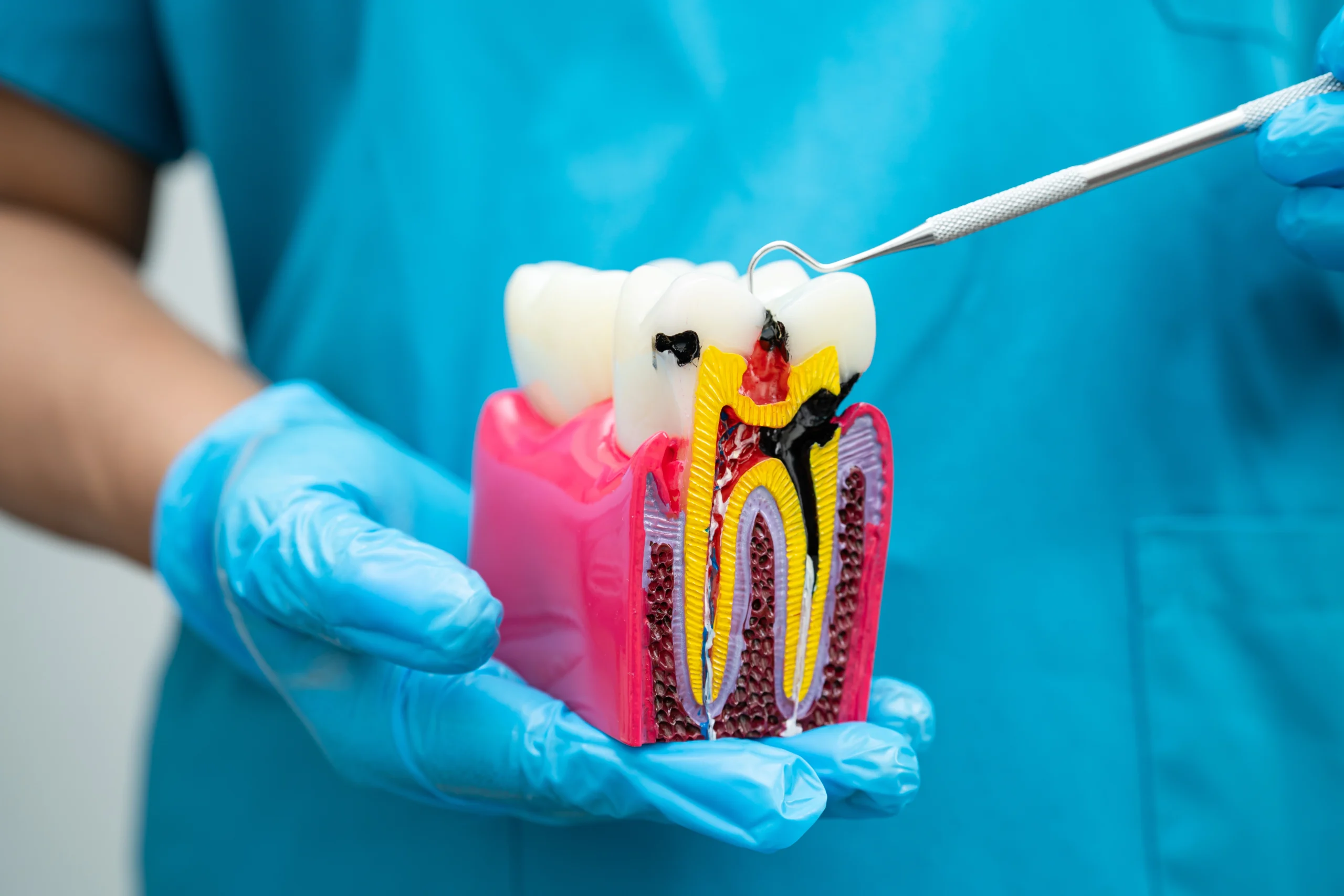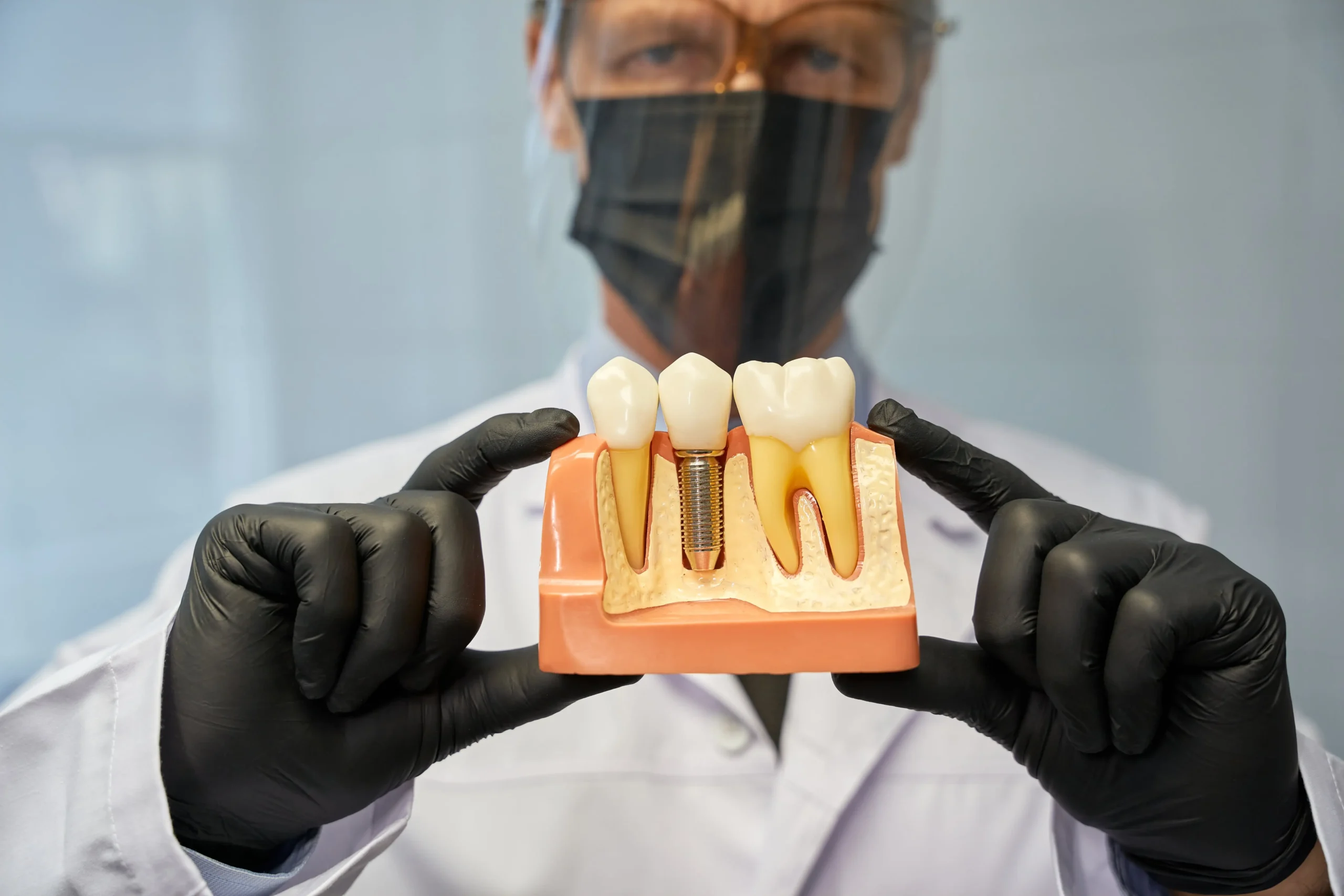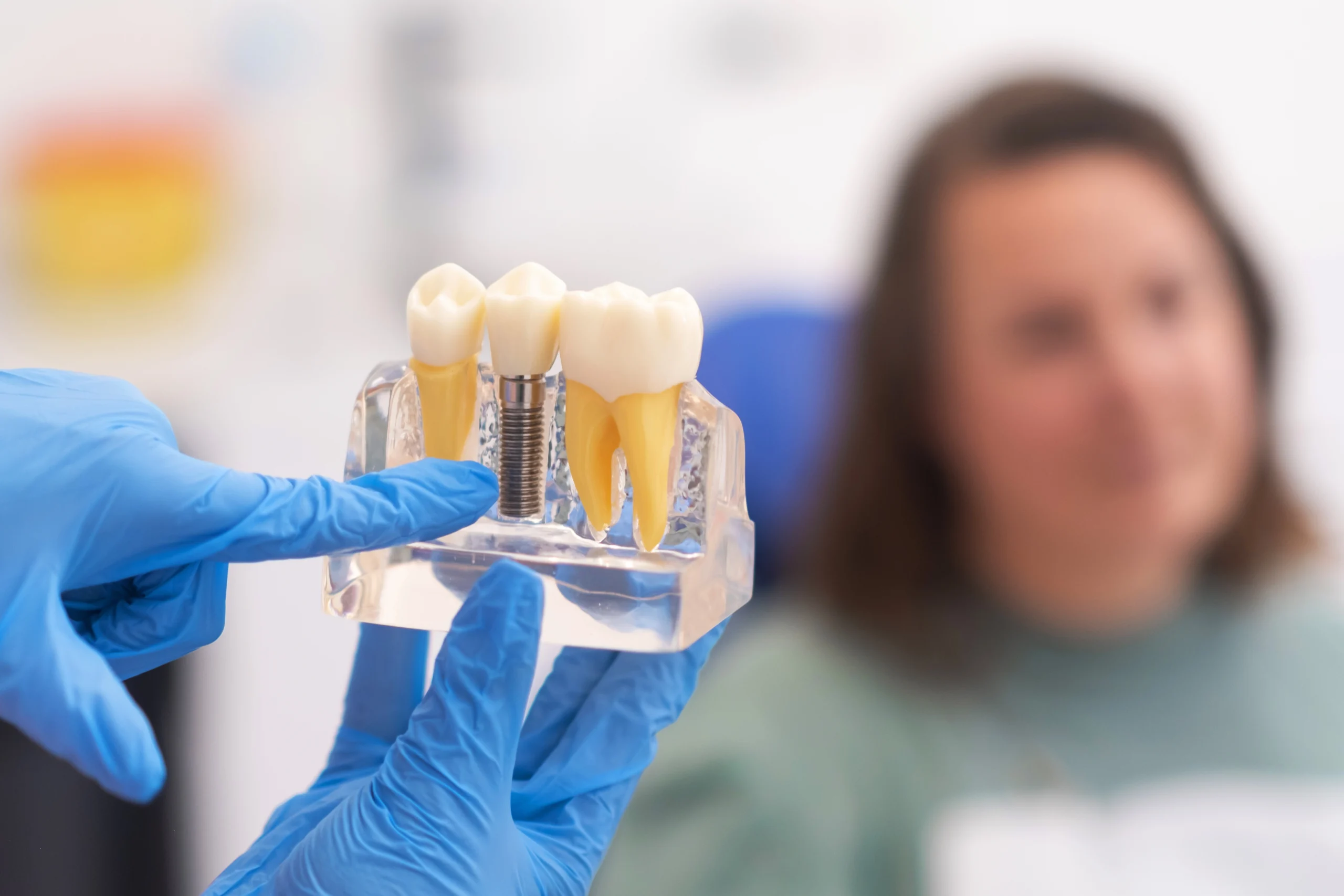Dental Blog - Hughson, CA
Tips, Facts, And The
Latest In Dentistry

How to Treat Tooth Decay at the Gum Line

A cavity where your tooth meets the gum might look small — but it’s not something to ignore. Gum-line cavities can go from a bit of sensitivity to severe pain (and even tooth loss) much faster than you’d think.
At Hughson Dental Implants, we see this all the time, and the good news is: you have options. Let’s break down what gum-line cavities are, why they matter, and how dentists treat them.
What’s a Gum-Line Cavity?
A gum-line cavity forms right where your tooth and gum meet. Unlike the crown of your tooth (the part you see when you smile), this area isn’t protected by thick enamel. Instead, it’s covered by a softer layer called cementum, which wears down more easily.
Add in gum recession (from brushing too hard, gum disease, or simply aging), and suddenly the vulnerable root surface is exposed. Plaque builds up, bacteria move in, and decay begins.
At first, it might look like a tiny white or brown spot, or you might feel a twinge when sipping something cold. Left untreated, though, it can quickly spiral into pain, swelling, or even infection.
Why Gum-Line Cavities Are a Big Deal
- They spread fast. The root surface is softer than enamel, so decay moves quickly.
- They’re harder to clean. Toothbrush bristles and floss don’t always reach well at the gum line, especially if gums are receding.
To make matters worse, gum-line cavities become more common with age, since gums naturally pull back over time. Even people with excellent oral hygiene can suddenly find themselves dealing with them.
Signs You Might Have One
Watch for:
- Sharp sensitivity to hot, cold, or sweet foods.
- Small dark spots or pits near the gum line.
- Bleeding or swelling around one tooth.
- Persistent, dull, or throbbing pain.
If any of these sound familiar, don’t wait. The sooner you see your dentist, the easier the repair will be.
How Dentists Treat Gum-Line Cavities
Treatment depends on how far the decay has gone:
- Early stage → Fluoride treatments can sometimes stop decay before it progresses.
- Small cavities → Cleaned and filled with a tooth-colored material, often in just one visit.
- Under the gum → The gum may be gently moved aside so the cavity can be reached and restored.
- Deep decay → If it reaches the nerve, a root canal and crown may be needed.
- Severe cases → If the tooth can’t be saved, an extraction may be necessary — followed by an implant, bridge, or denture to restore your smile.
Prevention: Your Best Defense
Stopping gum-line cavities before they start is easier (and less expensive) than treatment. Here’s how:
- Brush twice daily with fluoride toothpaste.
- Use a soft-bristle toothbrush to avoid gum damage.
- Floss every day (yes, really).
- Visit your dentist at least twice a year.
- Cut back on sugar and acidic drinks.
- Treat gum disease or gum recession early
Healthy gums mean fewer cavities — and a healthier smile overall.
The Bottom Line
Gum-line cavities might be small, but they’re not harmless. If you notice sensitivity or spots along your gum line, don’t ignore them. With early treatment and proper preventive habits, you can protect your teeth and maintain healthy gums.
At Hughson Dental Implants, we specialize in restoring smiles — from simple fillings to advanced implant solutions when teeth can’t be saved. Whatever stage you’re at, we’re here to help.



